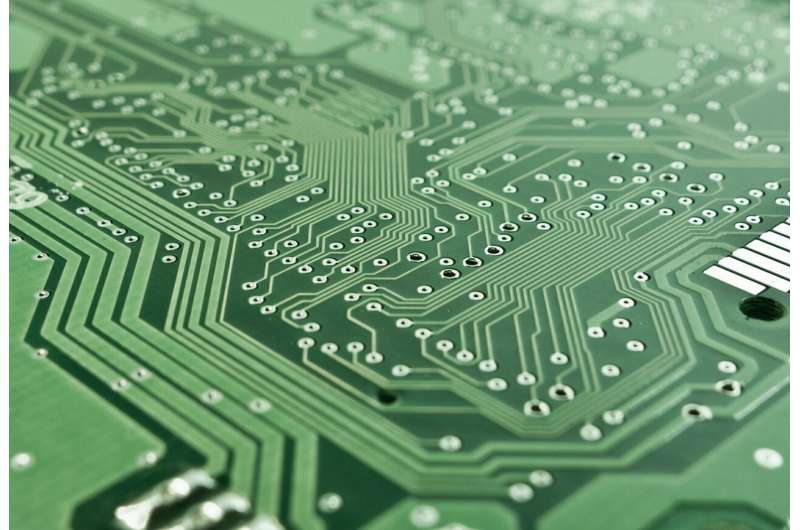Photochromic bismuth complexes show great promise for optical memory elements

Russian chemists have obtained a new photochromic complex composed of of bismuth (III) and viologen cations and used the new compound to create optical memory elements which were shown to be highly efficient and stable. The outcomes of the study may serve to expand the range of microelectronics components in the future. The research was published in the journal Chemical Communications.
Modern memory devices, such as memory cards and SSD drives, are based on electrical switches known as transistors, which can form two quasi-stable electrical states due to the presence of additional components capable of accumulating and storing electrical charge. The value of this charge enables or disables electric current through transistor at certain read voltage. In memory elements, the high current or "open" and low current or "closed" states correspond to logic one and logic zero, respectively, or vice versa. To write or erase one bit of information, the transistor should switch from one state to the other. In the case of photochromic materials, i.e. materials that change color when exposed to light, the switching requires a pulse of light and, quite often, superposition of the electric field, too.
Viologen cations consist of two linked aromatic pyridine rings (C10H8N2R2)2+ with two substituents (R) at the nitrogen atoms. Some halide metal and viologen complexes, i.e., those that contain elements of the seventh group of the periodic table (F, Cl, Br, and I), can change color when exposed to light. These compounds have not yet found application in electronics despite their highly appealing optoelectronic characteristics. For the first time ever, a group of scientists from the Skolkovo Institute of Science and Technology (Moscow), the Institute of Problems of Chemical Physics of RAS (Chernogolovka) and the Nikolaev Institute of Inorganic Chemistry of SB RAS (Novosibirsk), led by Skoltech professor Pavel Troshin, has designed a photosensitive bismuth complex with optimal properties and demonstrated that it can be used as an advanced, optically triggered material for memory devices.
"Earlier, we showed the prospects of using organic photochromic materials in photoswitchable field-effect transistors and optical memory elements. Recently, we looked into a series of dihetarylethene derivatives and established very important correlations between their structure and properties. In the current study, we have made a step forward along this avenue of research by using metal compounds in optical switches and memory elements," explains Lyubov Frolova, a senior research scientist at Skoltech.
The researchers assembled organic field-effect transistors with an additional photosensitive layer made of the bismuth complex with viologen cations. As an intermediate device fabrication step, the complex was crystallized as a film from a solution on a dielectric aluminum oxide layer. The scientists found that the device can be "programmed" by simultaneously applied light pulse and electric bias between the device electrodes, which results in the device switching between two or more quasi-stable electrical states. Having multiple states in the transistor opens up great prospects for creating multi-bit memory elements for high-density data recording.
The current running through the transistor channel can be modulated by 100 times in half a second and by 10,000 times in several tens of seconds of programming. This figure points to high efficiency of the devices, which matches the characteristics of the best organic photosensitive field-effect transistors known to date. The authors assume that their devices will have long-term data storage capacity and will be able to withstand many write-read-erase cycles. The recent research has demonstrated their stable operation in over 200 cycles.
More information: Dolgor D. Dashitsyrenova et al. Memory devices based on novel alkyl viologen halobismuthate(iii) complexes, Chemical Communications (2020). DOI: 10.1039/D0CC03732J
Journal information: Chemical Communications
Provided by Skolkovo Institute of Science and Technology





















